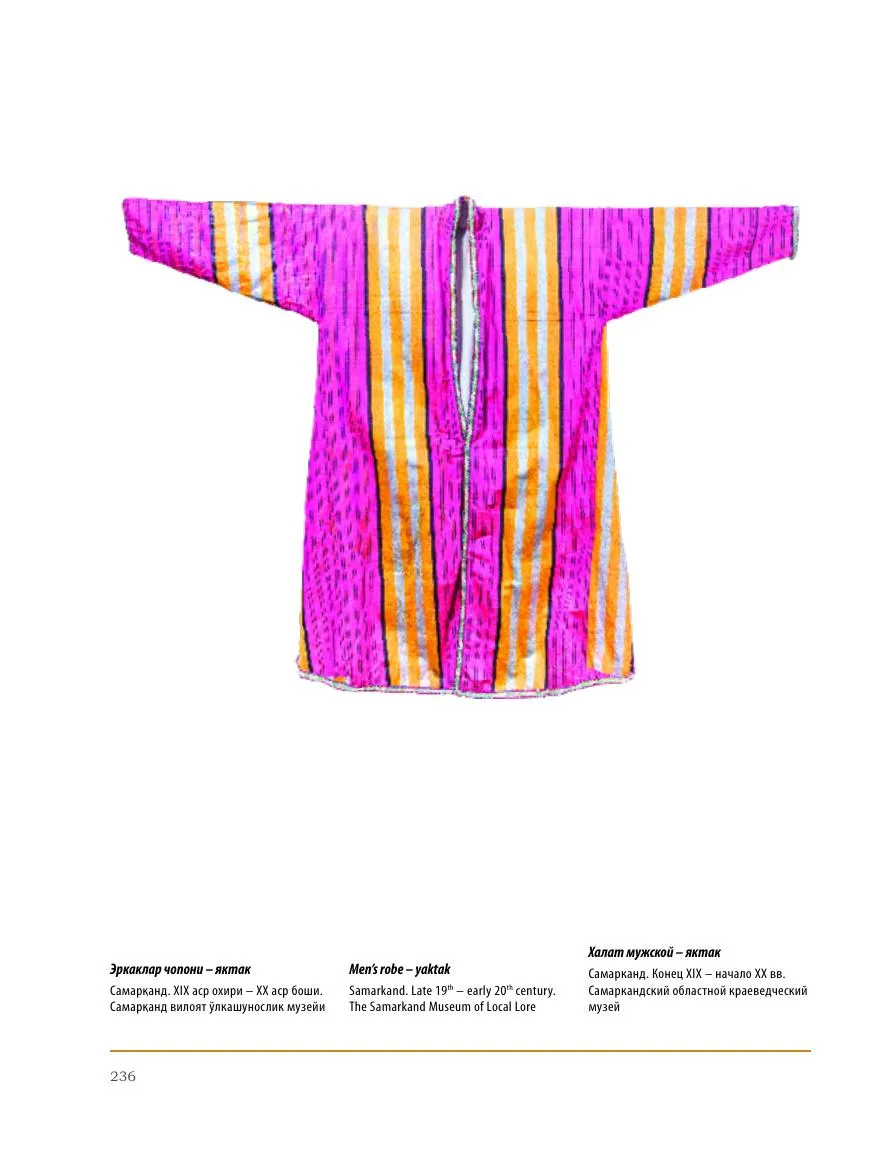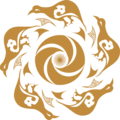What made robes in Samarkand different from their likes from other regions was their small length: robes worn by ordinary people reached only the middle of the calf, and those owned by the nobility and clergy were ankle-long.
At the ends of the sewn-on collar, the robe had two ribbons of the same fabric, which were tied during prayer. Three types of robes were worn in Samarkand: light yaktak, quilted chapan and chakman made of broadcloth. Their cut was based on a tunic-like shirt design. The robe had a protective braid that ran along the edges of the sleeves, hem, collar and skirt, forming a tassel of warp threads at the lateral cuts.
You can see more bright Samarkand robes in the book-album Traditional Uzbek Costume Based on the Materials of Museum and Private Collections in Uzbekistan. Part 1 (volume XLVIII, 232-233-pp.) from the Cultural Legacy of Uzbekistan in the World Collections series.
General sponsor of the project – oilfield services company Eriell Group.

